How To Choose And Hit Golf Balls – Ultimate guide
As a golf enthusiast, you probably want to know everything about golf, for example, what type of golf balls you should use as a beginner, mid-level, and advanced golfer. And is there a difference between practice balls and the golf balls you use when playing a real game of golf?
In this article, we’ll answer these questions and more about golf balls. By the end, you’ll have in-depth golf ball knowledge and confidence in your ability to choose and hit a golf ball. We’ll even tell you how many dimples a golf ball has and what those dimples are for!
Let’s dive in and learn about this little wonder including:
- A history of the golf ball
- Who invented modern golf balls
- What’s inside a golf ball
- Golf ball layers
- One, two, and three-piece golf balls
- How golf balls generate spin
- The types of golf balls for sale on today’s market
- Setting up and executing the right swing and making shots
- How to choose and hit a golf ball
- Using the right clubs for the shot
- Hitting high, low, and curveballs
Understanding the Golf Ball
According to the rules of golf, a golf ball must be a certain weight and size. The specifications that make a golf ball acceptable are written according to the USGA (United States Golf Association) and the R&A (Royal and Ancient Golf Club of St. Andrews). The rules are published in a book titled The Rules of Golf.
A golf ball must be 1.680 inches (42.67 millimeters) in diameter and have a mass no greater than 1.620 ounces (45.93 grams). Also, the ball has to perform within specific distance, speed, and symmetry limits. If the golf ball doesn’t meet these stringent standards, it may not be allowed in competition.
The History of the Golf Ball
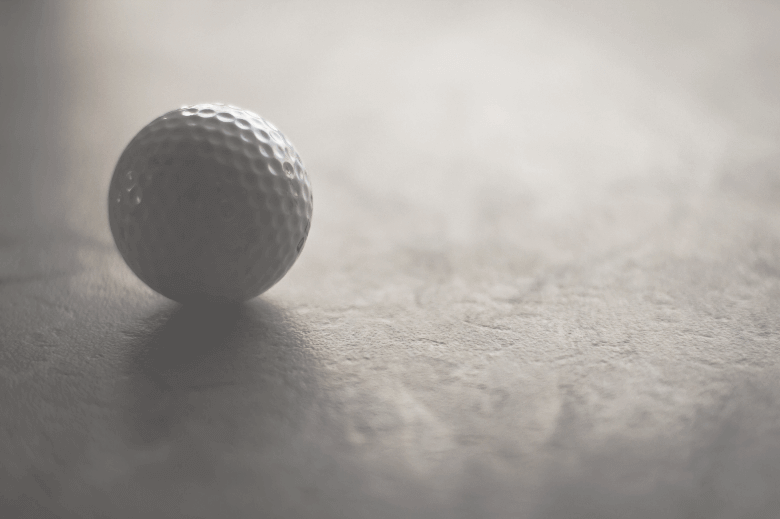
We don’t know exactly what the very first golf ball looked like, but a common belief is that hardwood balls were the preferred choices between the 14th and 17th centuries. These were usually fashioned from beech wood and box (an evergreen tree).
As was the custom, some golf balls were also made of hand-stitched leather then stuffed with cow hair or chicken and goose feathers. These golf balls were called featheries or featherys. Eventually, the feathered variety gained the edge over wooden balls and became the choice de rigueur.
The featherie had many issues. Because it was a handmade leather product, it was difficult to shape in a perfect sphere, which caused the ball to fly in an unpredictable manner.
The other problem was when featheries became wet—they could not travel as far as normal. Golfers also had to mind the ball’s potential to split when hit or upon ground impact.
Despite these challenges and inefficiencies, the featherie was still considered superior to the wooden ball and remained the preferred option until the mid-19th century.
In 1848, Dr. Robert Adams Paterson invented the gutta-percha golf ball, also referred to as a guttie or gutty. This new innovation was crafted from dried sap from the sapodilla tree, a native of Malaysia.
These balls were inexpensive to produce and had wonderful aerodynamic qualities. The guttie was propelled to the fore where it became the ball of choice.
As often happens with inventions, an insightful discovery was made accidentally. The balls with nicks and cuts flew more consistently than balls fresh from the factory line.
To capitalize on this found aerodynamic quality, manufacturers began creating markings and indentations with a knife to texturize the ball’s surface. These new balls with carved surfaces were christened “brambles” because they resembled the bramble fruit.
Building upon the carved balls of yore, dimpled balls appeared in the early 1900s and provided greater control of flight patterns, trajectory, and spin.
In 1898, Coburn Haskell gained prominence in the golfing world thanks to his introduction of the wound golf ball. The ‘Haskell’ golf ball comprised a liquid core or a solid round sphere wound with rubber thread. This was then covered with an outer sheath produced from balata tree sap.
The three-part ball proved popular and remained so until further developments in the 20th century, including the advent of Surlyn in the 60s, a synthetic resin. Around the same time, urethane was put to use covering golf balls because it was long-lasting and resistant to cuts and nicks.
Jim Bartsch created a solid ball in 1967 and Spalding swiftly purchased the patent. This ball was unique as it wasn’t layered like previous designs. Spalding redesigned the ball. Now, most non-professional athletes use this solid core golf ball on the course.
Anatomy of a Golf Ball
From manufacturer to manufacturer, golf ball construction varies slightly. But the basic golf ball usually includes a central rubber core that is either synthetic or pressurized and outer layers wrapped in a white-dimpled cover.
Dimples
Did you ever wonder how many dimples a golf ball has? Interestingly, the standard is 250 to 450 dimples per ball. Regulation balls must adhere to a 336-dimple stipulation. Dimples aid aerodynamic function and it’s hard to find a modern golf ball without these small indentations.
Core
The degree of compression in the ball’s core layers usually dictates how far the ball will travel. It also determines if you will have a “hard feel” or a “soft feel” when hitting the ball, and the spin and backspin the ball generates.
Cover
The dimpled outer layer is made of urethane or Surlyn. This choice affects the ball’s performance about the spin and the feel of the ball, that is, whether it’s hard or soft.
Layers
The parts of a golf ball are core, cover, and inner center layers. The construction of the ball is said to increase spin, which leads to greater control on the green, most in the short game.
Modern-Day Golf Ball Construction
All golf balls are not created equal. So, which one should you use and what are the differences?
Let’s take a look so you’ll be armed with information when making your selection. There are five different types to choose from and each has its own construction and hit qualities which affect performance:
One-Piece Golf Balls
The most basic of golf balls and thus inexpensive, these balls cater to beginners, mini-golf courses, and driving range practices. Often made of Surlyn. Pro golfers note one-piece balls have a cumbersome feel and very little spin.
Two-Piece Golf Balls
A great beginner ball because of the distance it can cover, this ball has a solid or synthetic rubber core of polybutadiene or a similar medium. The hard outer shell is made of Surlyn or urethane. If you don’t need spin and prefer distance over control, this ball is for you.
Three-Piece Golf Balls
When you’re ready to up your game and want more control and a greater degree of feel, try a three-piece golf ball. The core is solid liquid or rubber surrounded by a second wound layer of rubber followed by a soft outer cover.
Four-Piece Golf Balls
This ball has a solid rubber center and two extra rubber layers encasing the core. The outer shell is generally urethane and gives the ball its enhanced feel. Balls that have an extra layer perform well by adding power and spin. You should be an advanced golfer if you want to use these balls as they aren’t forgiving.
Five-Piece Golf Balls
The mother of all golf balls, the five-piece offers the best spin performance and other benefits that make it favored by professionals and low handicappers alike. With a five-piece, each layer caters to different swing speeds and shots, which further enhances your game.
Golf Balls and Spin
A key aspect of many ball games is the spin you can put on the ball to control it, and golf is no different. In fact, balls are designed with spin in mind.
When hitting a golf ball, the amount of spin can determine if your ball will stop on the green or fly into a pond. If spin is used with precision, your ball will stop quickly and close to the hole. A great golfer can control this spin effortlessly and consistently.
Low-Spin Golf Balls
Low-spin golf balls are designed to curb and reduce sidespin. They also produce longer and straighter drives and increase the ball’s roll upon landing, which is useful if your swing isn’t perfected yet.
For more info on sidespin and the face to path relationship, take a look at this video explanation:
Mid-Spin Golf Balls
Mid-spin golf balls are suitable for most players. Incorporating the best of both worlds of distance and feel, these balls have varied softness or feel, depending on which brand you choose. Expect mid-spin golf balls to reach distances greater than their low-spin counterparts.
High-Spin Golf Balls
This design was created to increase the ball’s spin when flying through the air. When a ball is hit, the backspin that takes the ball through the air requires a higher spin to produce a longer carry.
If you hit right to left with a draw, high-spin golf balls are a preferred choice for you. Furthermore, a high spinning ball increases feel on the green, which will improve control.
Compression Measures
Compression is the measure of deflection a ball generates when hit. Measured between 0 to 200, 0 indicates a ball deflects 5 mm (one-fifth of an inch) or more and 200 indicates a ball doesn’t compress. The average ball ranges between 50 to 100 on the compression scale.
The lower the compression, the softer the ball and the more distance you can cover. Balls with higher compression are controlled more easily and preferred by players with a faster swing.
Golf Ball Categories
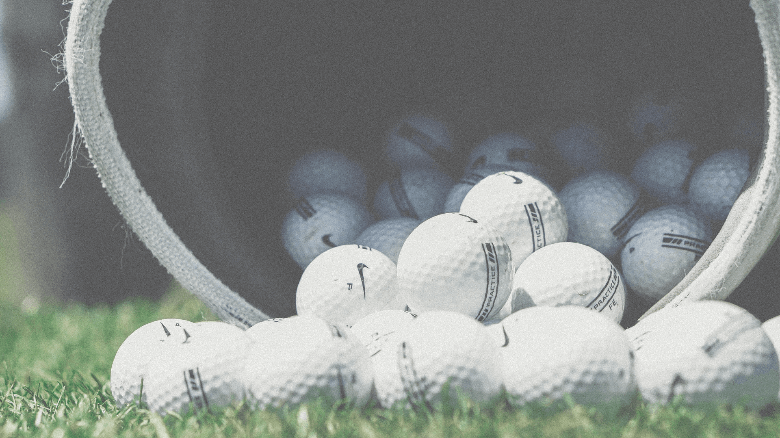
There are two main golf ball categories: recreational and advanced. Recreational balls are for people with a low swing while advanced, multi-layered balls, featuring a firm core and a soft cover, cater to advanced players with a strong swing.
Recreational Balls
These two-piece golf balls are mainly used by weekend golfers because they produce adequate distance and are durable and long-lasting. They come with a core that’s firm enough to generate distance when hit.
Advanced Balls
These balls are multi-layered with a three or more part construction. The core is generally firm and the cover soft. Advanced balls have more spin and are soft to the hands.
As a general rule, you need to be a very competent golfer to select advanced golf balls. Good shot execution requires a strong swing due to the compression measure. If there is a lack of compression, distance will be lost.
Practice/Range Balls
Range and practice balls are designed as low-cost and durable options and usually consist of one layer only. The flight distance is short and the ball’s performance is like a quality golf ball, helpful to players who need feedback on their game.
Practice golf balls are labeled with ‘practice’ and have lines printed on the ball. These lines help players to see the ball’s spin easily with the naked eye and high-speed imaging equipment.
Recycled Balls
If you’re new to golf, chances are you’ll be losing A LOT of balls. An estimated 300 million balls are lost in US golf courses each year. These balls get collected and sold to recycling companies, which then resurface the balls and place them on the market again.
Recycled balls offer new golfers a great way to go green and keep their golf ball purchases inexpensive. Choose recycled golf balls and hit with impunity!
Markouts/X-Outs
If you’re a casual golfer looking for an inexpensive option, you can buy X-out balls. These balls are considered factory seconds. X-out balls might have failed inspection and quality control, but they are still okay to use. They often come in generic packaging and are sold at discounted prices.
Choose X-outs to save money and hit high-quality balls at a price far below the retail norms.
Buying a Golf Ball: Choose Well and Hit Better
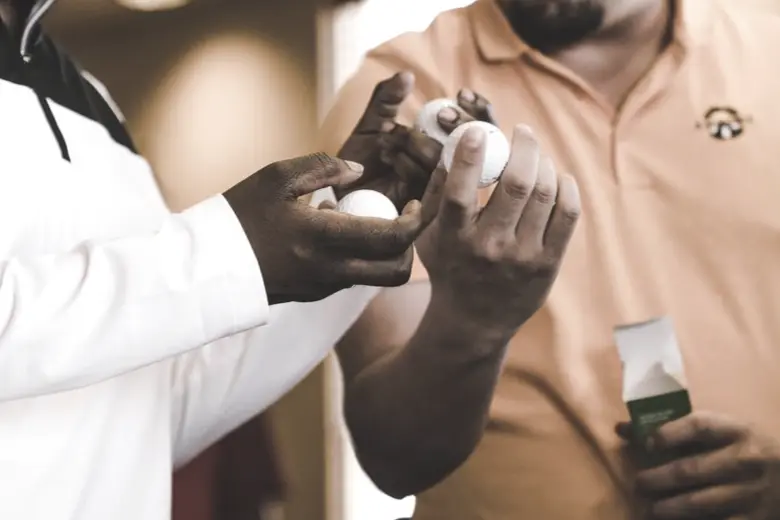
Now that we have covered all the technicalities of a golf ball, let’s check out what type of golf ball is best suited for you. You’ll see golf balls marketed under all sorts of names but here are the terms you’ll encounter most often:
Tour-Level
- Pro-caliber control and feel
For seasoned golfers, these multi-layered balls are designed to allow you to sculpt shots and offer control on the green. The thin layer around the ball provides amazing spin control and precision with each shot.
Distance
- Maximum forgiveness
Distance balls cut down on the sidespin, which produces straighter flight paths. Designed with a larger core, these balls provide maximum carry.
Feel
- Lowest compression
Feel, that is, how hard or soft a golf ball is, is directly related to compression. Low-compression balls reduce spin thus allowing straighter and longer flights and a softer feel on contact.
Women’s
- Soft feel and added distance
Sex-specific golf balls are crafted because female golfers, including among the pros, have a slower swing. These golf balls use a two-piece construction for optimal control. Also, women’s golf balls are durable and provide greater distance per shot. Suitable for beginners and recreational golfers alike.
Golf Ball Personalization
- Branded for Your Game
Want to stand out from the competition? Have your balls branded with your name or initials. Personalized balls also make awesome gifts for the golfer in your life.
Hitting a Golf Ball 101

Now that we’ve gone over how to choose golf balls, let’s get stuck into how you actually hit a golf ball.
If you’re taking your first ever swings on the course, you’ve probably realized there’s more to golf than whacking the ball off the tee and trying to get it in the hole. We’ll give you a few pointers to prepare you for a great round, even as a complete beginner.
It all starts with choosing the right club for the job, then making the right hit. A choose and hit formula if you will!
Selecting the Right Golf Club
These are the clubs that make up your golf bag, get to know them well and understand what each is for so you can choose and hit with confidence and style.
Woods
If you want a distance shot use a wood. Woods were once made of wood and even though materials have moved on, these clubs have retained the original name. Woods give you the greatest distance possible and are best for shots between 200 to 350 yards.
These clubs are further differentiated between driver and fairway woods and a numbering system. Here’s how that works: 1 offers the greatest leverage and 3, 5, and 7 are fairway woods. As a rule of thumb, the higher the number, the shorter the distance.
Irons
Irons are best for shots less than 200 yards. They are a bit heavier than woods and create more lift. Irons range from 1 through to 9 where numbers 1, 2, and 3 are long irons for further distance and 4, 5, and 6 are for shots between 150 to 170 yards. Irons 7, 8, and 9 are best for short shots.
The two categories of irons are blades and cavity backs. For beginners, cavity backs are easier to control.
Hybrid Clubs
A hybrid club is a cross between an iron and a wood. The distance it generates is similar to irons but with greater flexibility. If you’re a beginner, hybrids are ideal.
Wedges
When you need height, choose a wedge. This golf club is what you use when you have a hazard in your path and some are named accordingly. Wedges include the lob wedge, gap wedge, pitching wedge, and sand wedge.
Putters
Putters are preferred for short distances. As soon as you reach the green, grab a precision putter to help you sink your ball.
Setting Up Your Swing
Here’s where golf swing mechanics come into play. The proper stance for a swing is to square your shoulders with the ball and align your hips, knees, and feet. The ball should be directly in front of you in a parallel line to your body.
If you’re a visual learner, take a look at this insightful video:
Performing a Basic Swing
Tilt your body toward the ground so one shoulder is lower than the other, keep your chin down and your eye on the ball. Twist your body from the backswing into the downswing and keep your shoulder low. Your front hip is turned toward your target and you should strike the ball with a follow-through motion. Keep your eye on the ball at all times.
Making Adjustments for Different Shots
By controlling the force you use, you can make shots that land the ball close to where you want. Use full swing, half swing, and three-quarter swings depending on your goal. To create more power, shift your weight towards the back when setting up the backswing.
Driving the ball: it’s imperative to keep your arms straight. This helps maintain accuracy for your swing.
Don’t forget to practice your game with all your clubs. This will help you understand the properties of each and how much yardage they offer.
How to Hit a Golf Ball With a Driver
Keep your stance wide (wider than shoulders) and place the ball toward your front foot. Grip the club the same way you grip a baseball bat and hold it about 10 to 12 inches from your body.
Your tee should be 2.75 inches and lightly placed in the ground (don’t ram it in). Choose your target and line your body up to start the swing. Lift your arms up to start the backswing, pause for a moment to get your composure and swing your driver down to hit the ball with follow-through. Twist your body and let your foot follow through as well for smooth execution.
How to Hit a Golf Ball With an Iron
Start by placing the ball in the direct center of your stance. Prepare yourself for the shot by settling your stance and lining up your body, ball, and club toward the target. Engage your weight with an ideal of 55 percent centered in the front of your body.
Strike the ball and the club should move in a very large circular motion. The club also makes contact with the ground and your ball will fly in the air—hopefully!
How to Hit a Golf Ball Straight and How to Hit It With a Curvature
Once again, get into your standard stance. The basic rule of making a ball travel well is hitting the ball with a clubhead faced in the exact direction you want the ball to go.
If you move the clubhead even five to ten degrees in either direction, the ball will fly that way and you get a curveball.
A shot that starts five degrees to the right and with five degrees of swing path will give you a straight shot while a shot that was ten degrees in-to-out and five degrees to the right will make the ball curve.
How to Hit a Golf Ball Low
A low shot gives you more control because forces like wind and weather can make a high flying ball’s trajectory erratic.
Start with your basic stance and move the ball six to twelve inches to the back of your stance. When completing the shot, make sure that your front arm is in an L shape and your back arm is straight. This is important as the shot will not work otherwise.
When you take the shot, finish it at waist height to make the shot as low as possible.
How to Hit a Golf Ball High
Get your stance in place, and position the ball six to twelve inches toward the front of your stance. Keep in mind that the further you put your ball forward, the higher your ball goes. As you take your shot, be sure to completely follow through, and finish the shot with your club held high, this will make the golf ball’s trajectory higher.
How to Hit a Golf Ball With More Power
Start with your basic stance, raise your club to the top of your backswing and then lower it to waist level. When you swing and connect with the ball, push your ball vertically and strike with a full swing for a powerful shot.
Summary
We’ve covered a lot of valuable information today and hopefully you now you have a better understanding of golf balls, how to choose and hit them, and the importance of purchasing the right ones for your game. Be patient and relaxed while you play and remember to practice as much as you can, you’ll be using pro balls and clubs in no time.

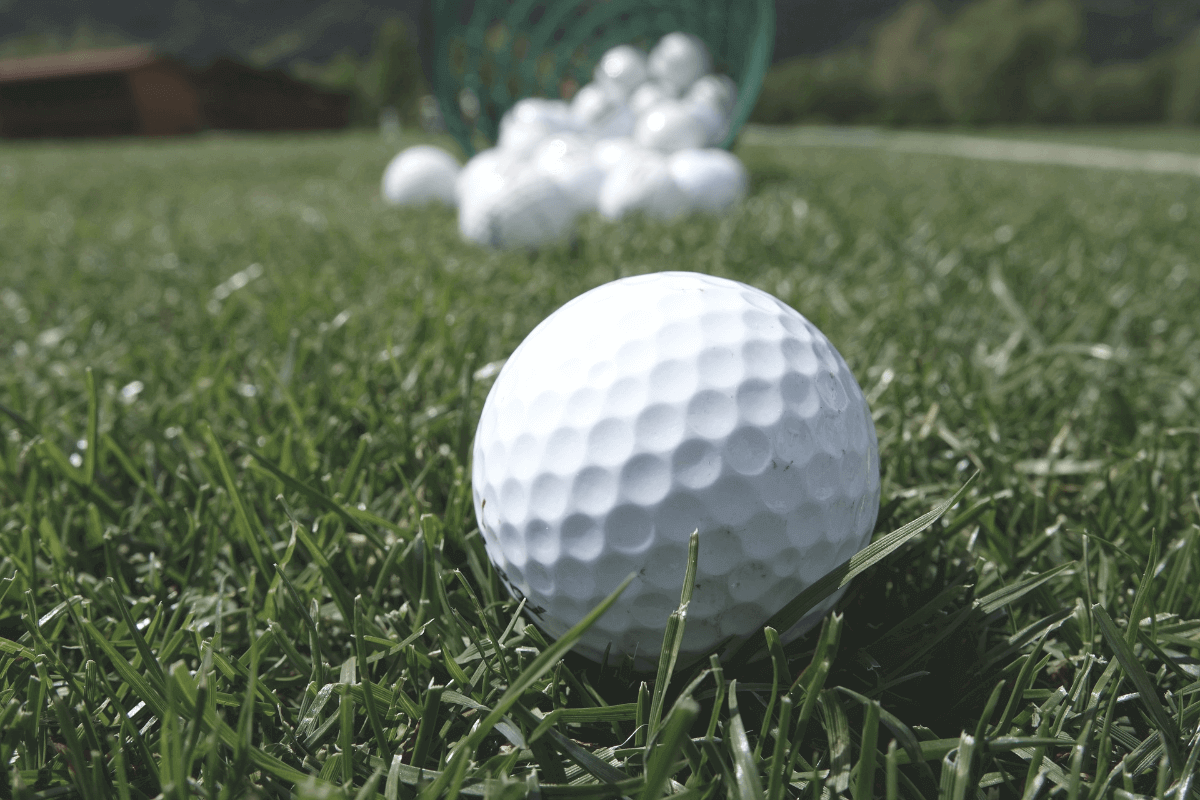
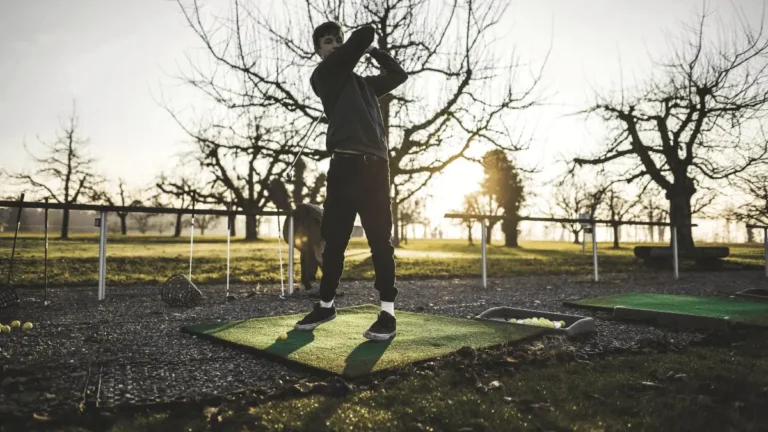
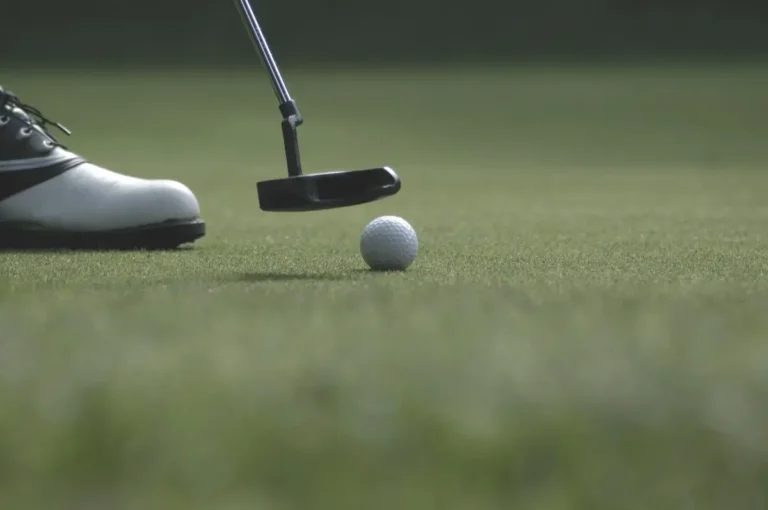
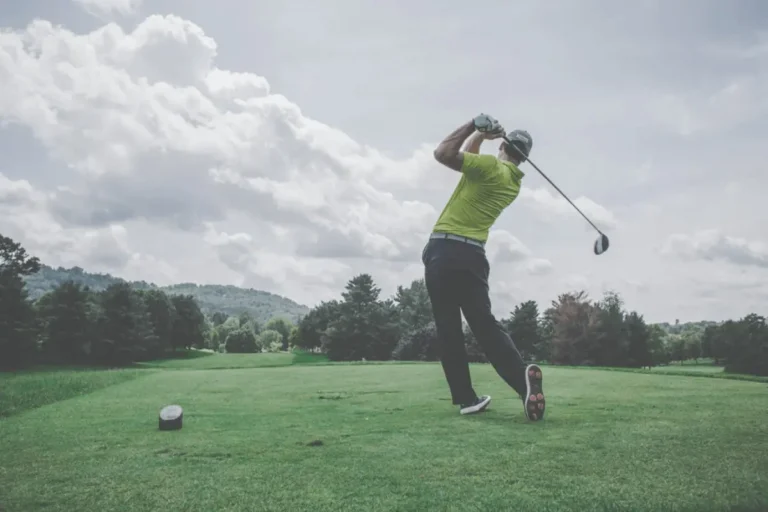
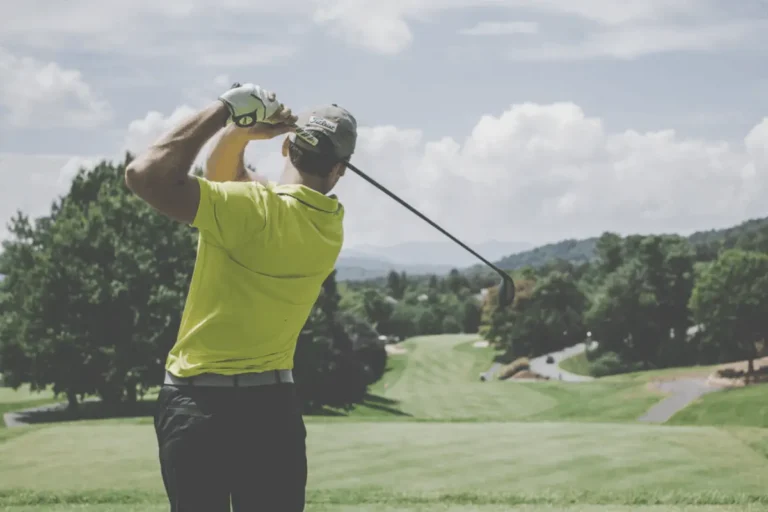
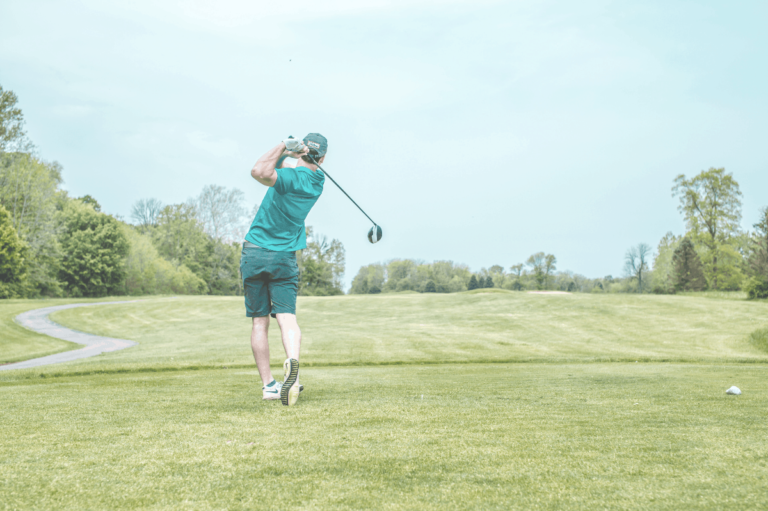
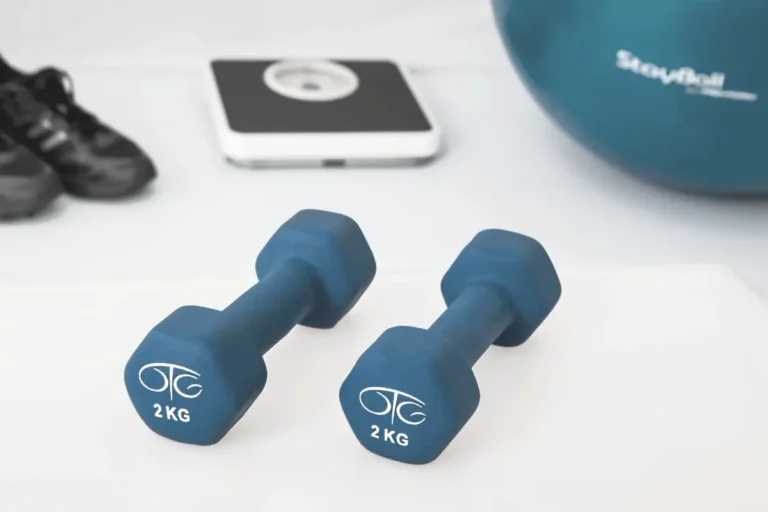
I love reading your site.
Hey Dernier, glad to hear that from you and happy to have such a loyal reader! thank you so much
Great news once again!
Thanks Prager. Happy to hear that from you! and I hop you enjoyed learning more from it.
This is a great blog.
Hi Stot, thanks a lot and I hop you Found what you deserve from this “great blog”
Amazin!
Hey Hougen, happy to have such a loyal reader like you! thank you so much!